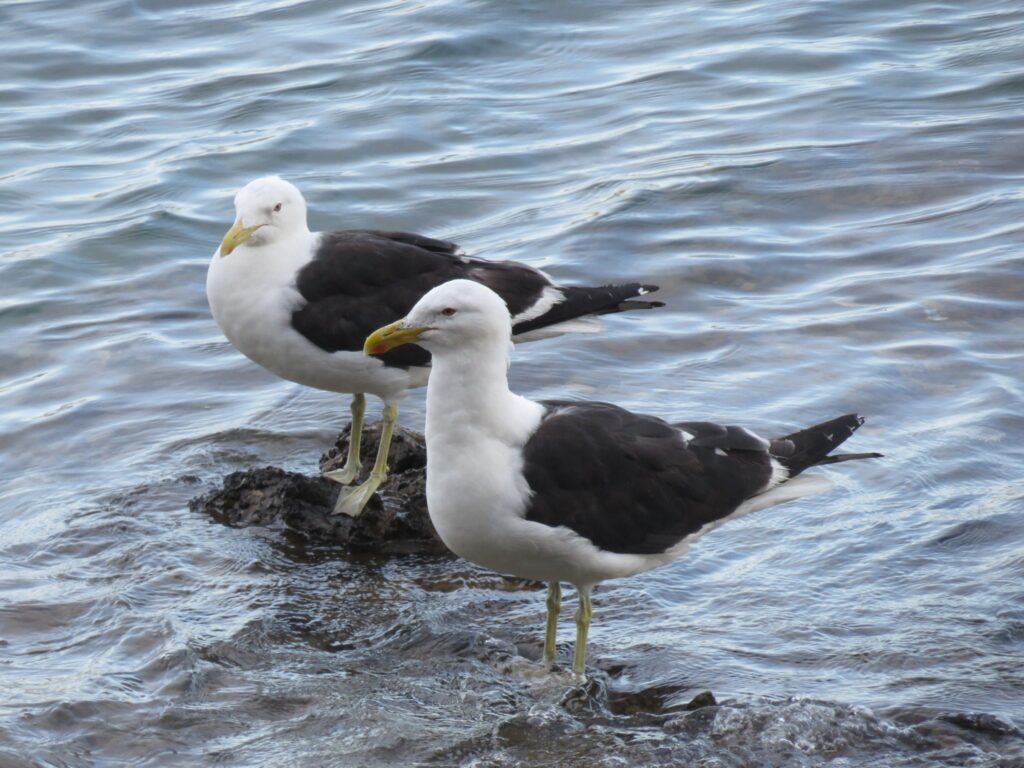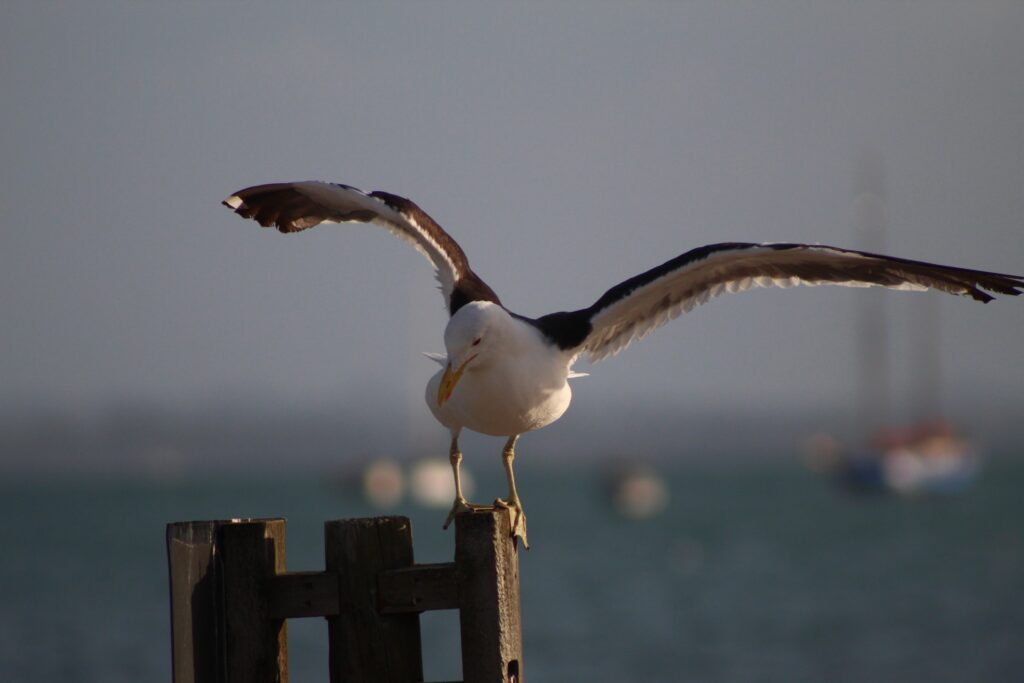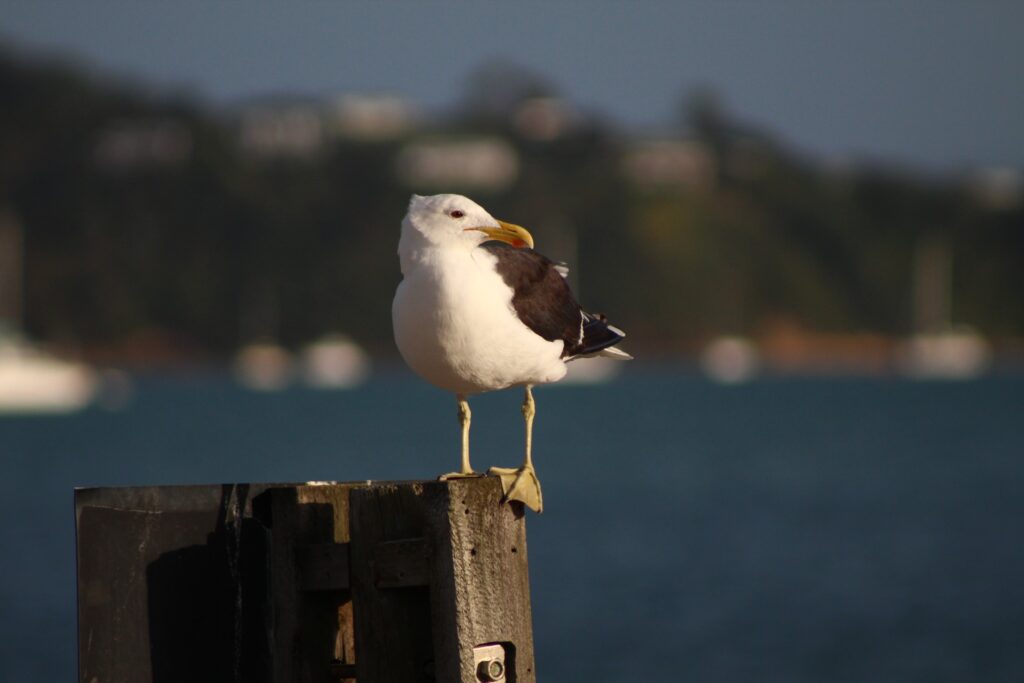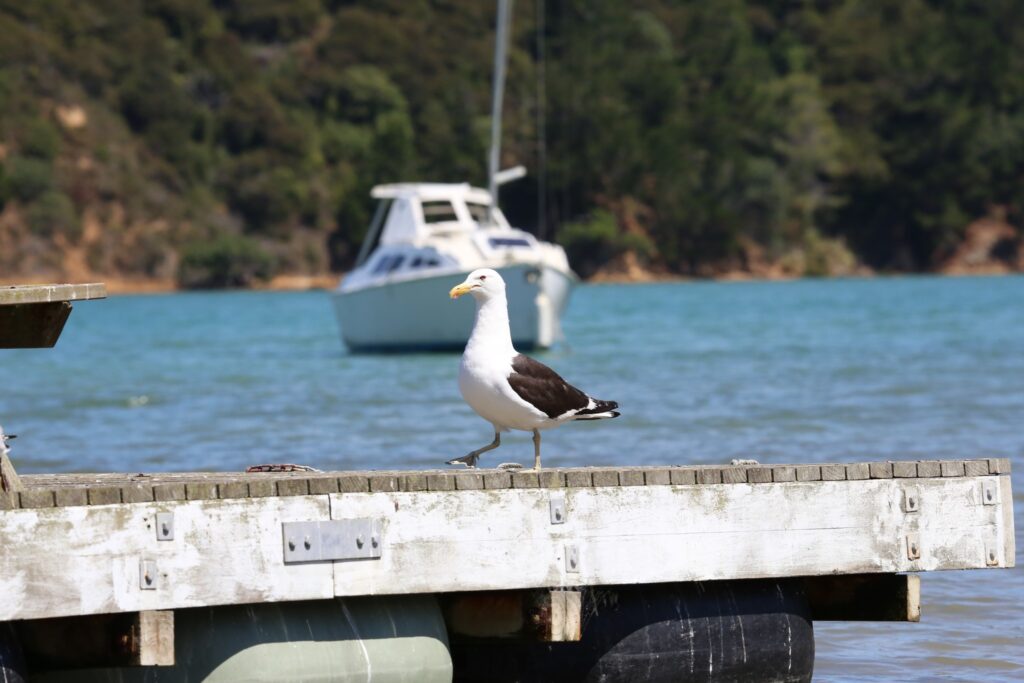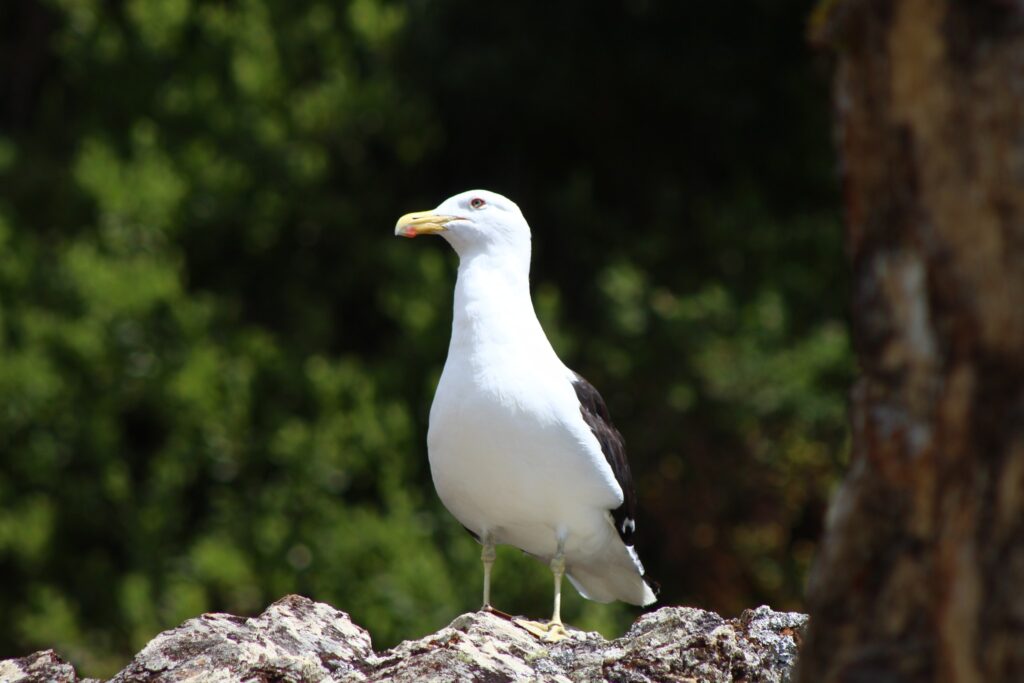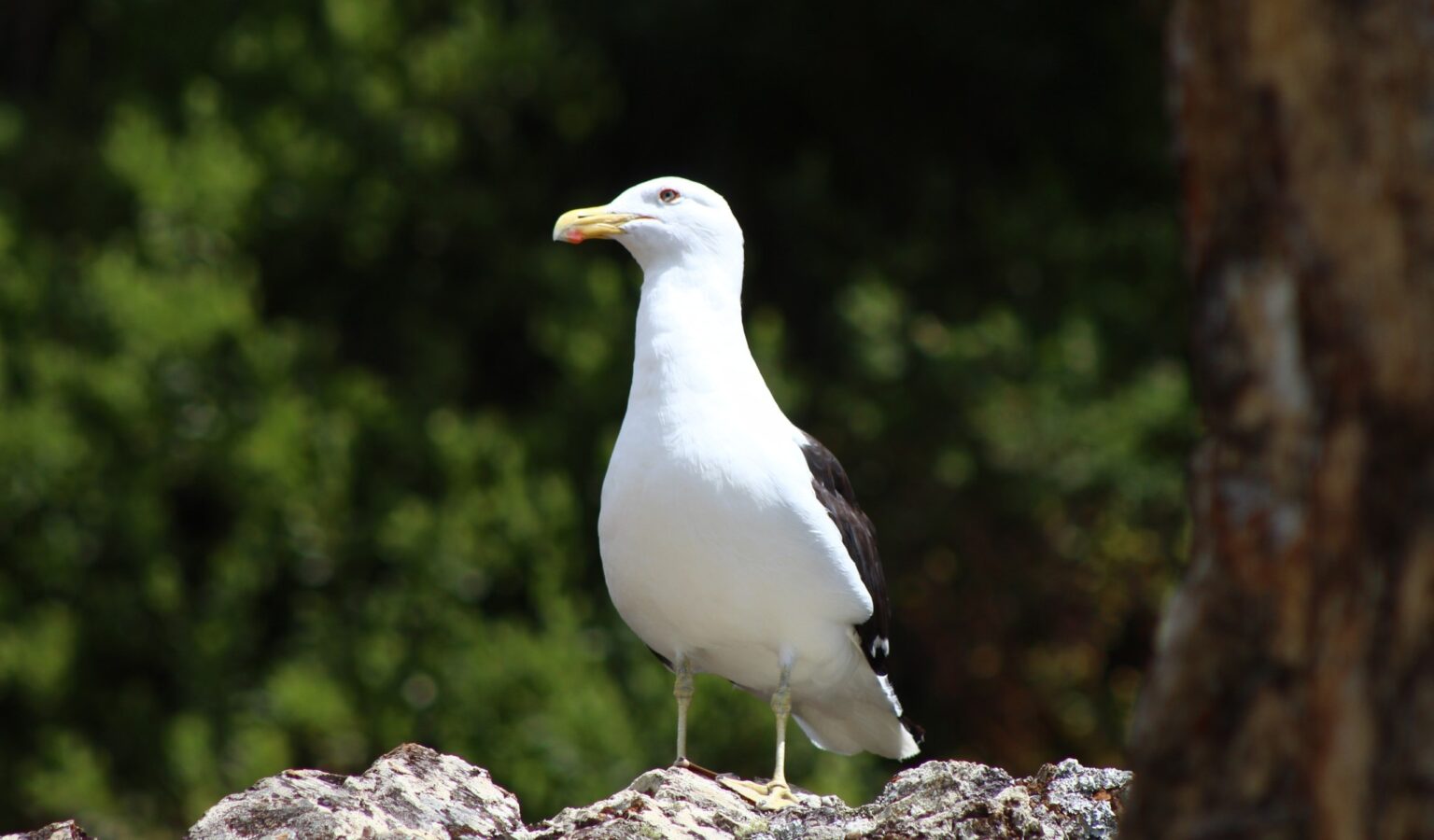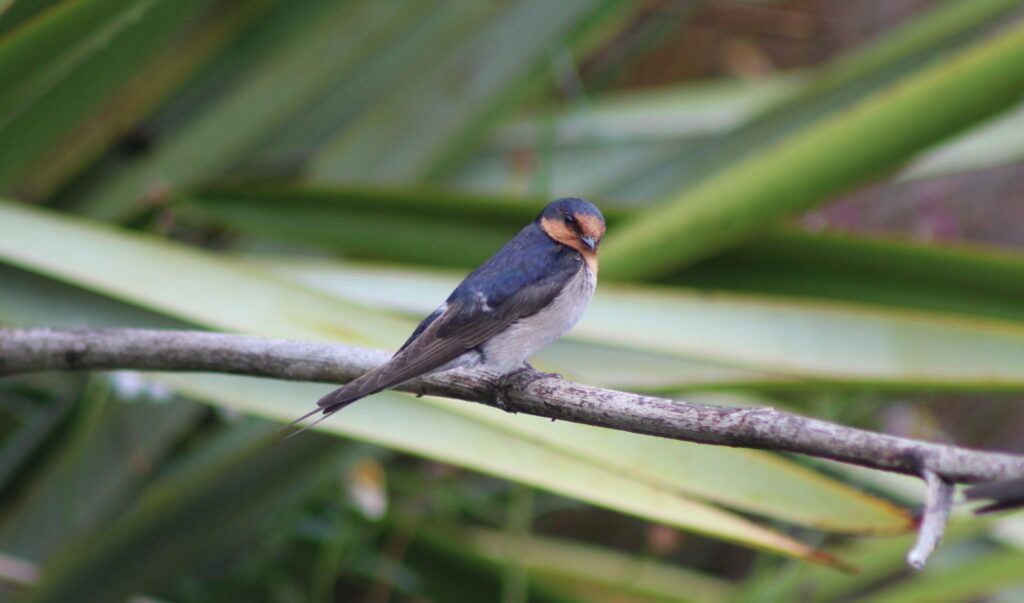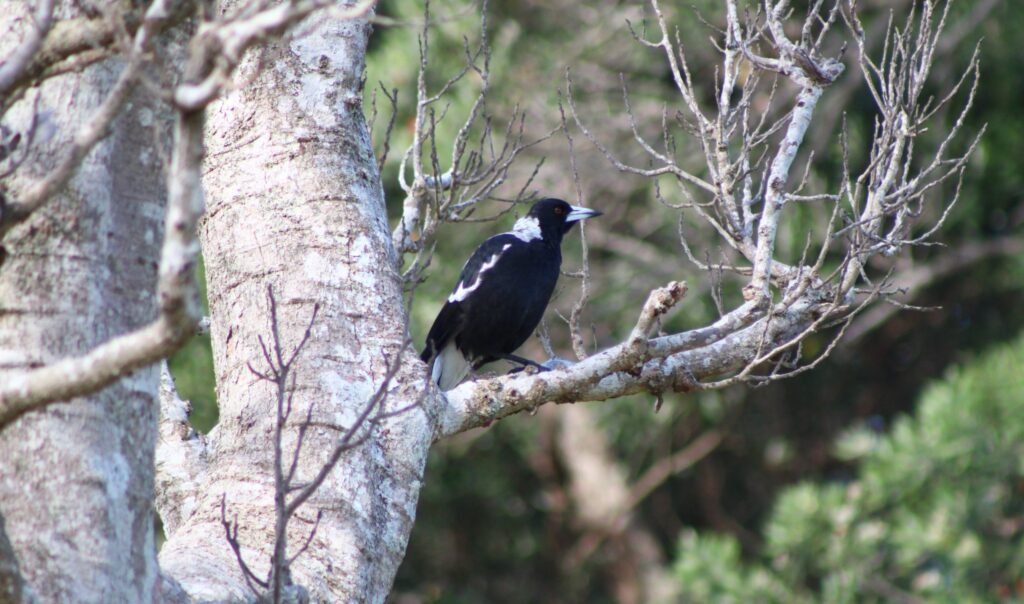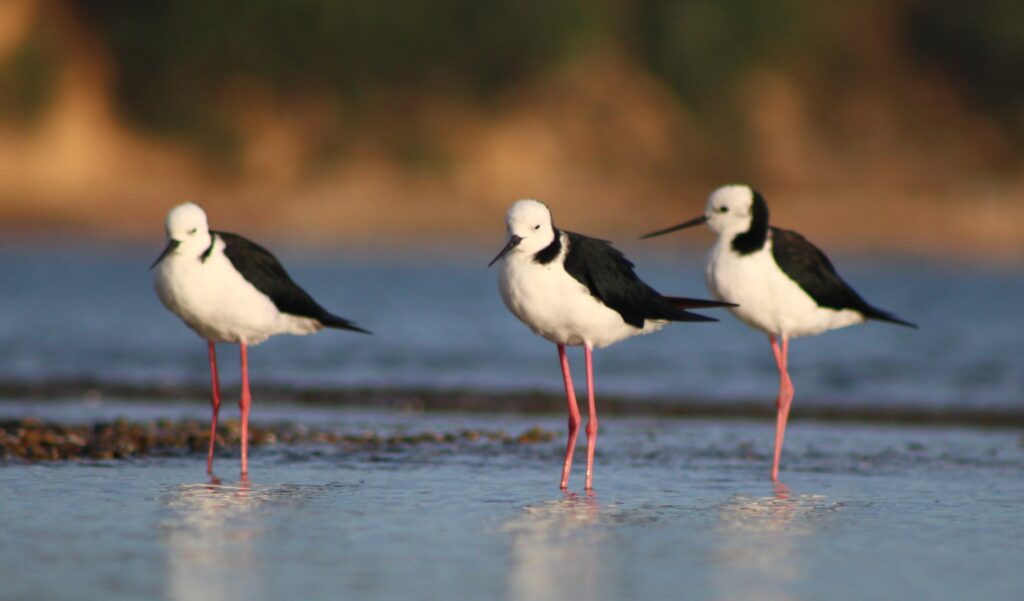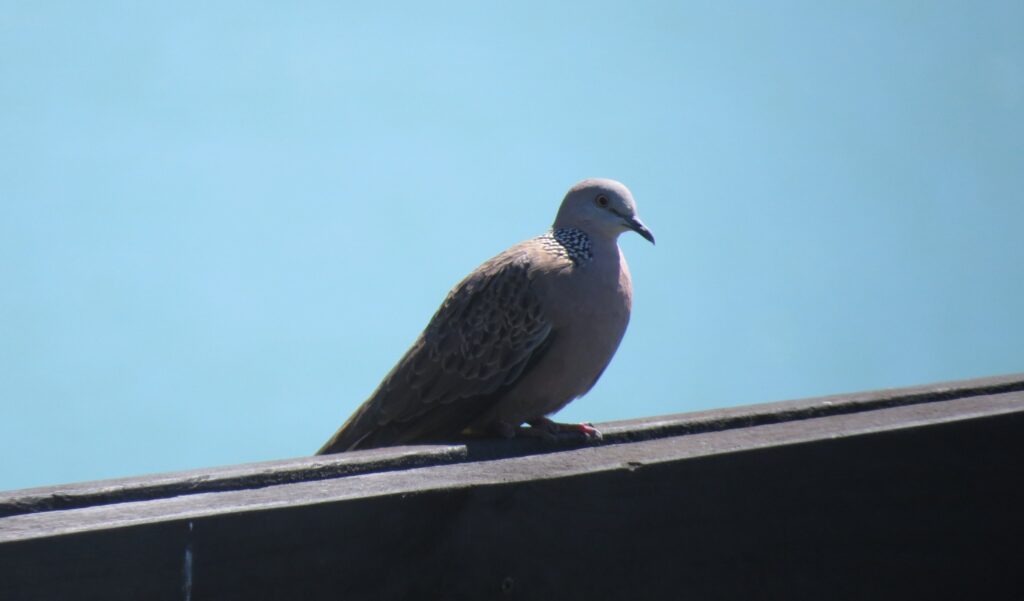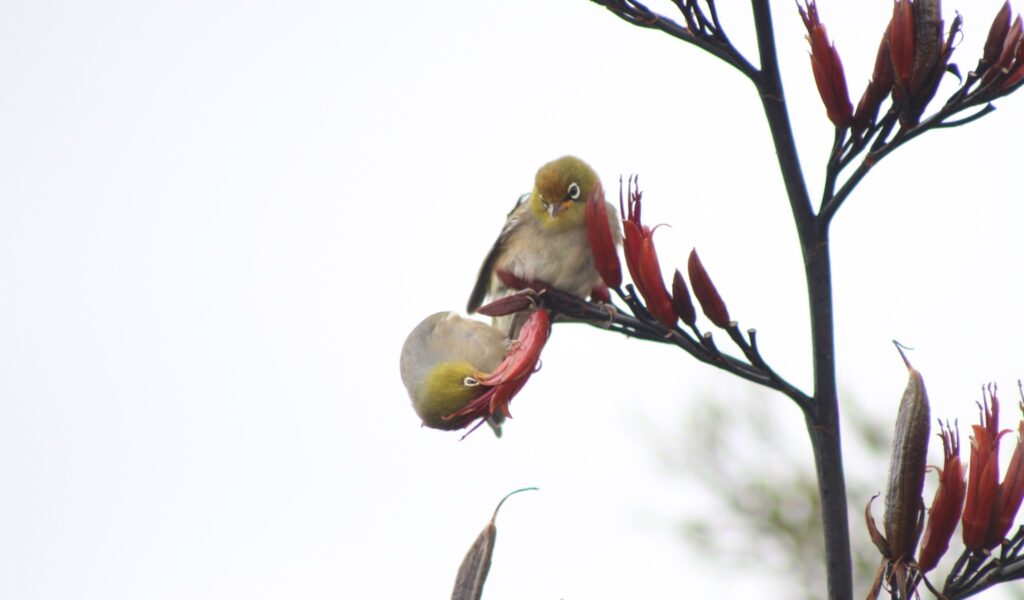Order) Charadriiformes
Family) Laridae
Species) Native
Length) 60 cm
Weight) 1.0 kg
Other names) kelp gull, dominican gull, black-backed gull, mollyhawk, seagull, blackbacked gull, black backed gull
Threats) cats, rats, skua, sharks and killer whales
Identification
The Black-backed gull is a large black-and-white gull with a white head and underparts, black back, yellow bill with a red spot near the tip. Located on Waiheke beaches where food or bait is readily accessible.
The black-backed gull is one of the most abundant and familiar large birds in New Zealand, although many people do not realise that the mottled brown juveniles (mistakenly called “mollyhawks”) are the same species as the immaculate adults.
Adults have white head and underparts with black back, yellow bill with red spot near tip of lower mandible, and pale green legs. Juveniles are dark mottled brown with black bill and legs; their plumage lightens with age until they moult into adult plumage at 3 years old.
They let out a long series of loud calls ‘ee-ah-ha-ha-ha’ etc, given in territorial and aggressive contexts.
They are abundant anywhere food scraps, offal and other organic waste can be obtained, including landfills and wharves. Common in estuaries and harbours, rocky and sandy shores and riverbeds; occurs more sparsely inland over farmland, and even subalpine tussockland and herbfields.
Black-backed gulls are often attracted to food sources provided inadvertently or deliberately by people. Black-backed gulls are often seen on the water’s edge where they scavenge corpses and fish frames washed up on the tide. Flocks follow ploughs or inshore fishing boats with equal vigour.
Breeding
Black-backed gulls are monogamous breeders. They share incubation and chick care.
Their nests are a bulky collection of grass, small sticks or seaweed, or a simple scrape in sand or shingle.
Laying is mainly in October-January. Incubation 23-26 days; chicks fledge at about 7-8 weeks old, and are fed by adults for at least another month.
Their Clutch is 2-3 large grey-green eggs with dark brown spots and blotches.
Food
Black-backed gulls are both predators and scavengers.
They catch and consume a wide range of marine and terrestrial invertebrates, fish, small mammals, birds and their eggs and chicks. They consume large quantities of organic waste from landfills and farms (e.g. docked lambs’ tails), plus offal from fishing boats and processing factories.
Waiheke Locations
Waiheke Beaches – Oneroa, Onetangi, Palm Beach etc ( If you have food with you they are usually overpowering red billed seagulls to grab whatever they can get (watch your food!)
Fishing Spots – Oh yes they are there too, they aren’t as beggy or cunning as the red billed gull but they aren’t afraid to fly at the line when casting or get any unwanted bait.
Garbage Dump – Found hanging around scavenging for their next meal inside the building or outside with the red billed gulls.
The Black-back gulls are flying birds so they can really be anywhere on Waiheke but not just Waiheke they are all over New Zealand, these are just areas I’ve spotted them and photographed.
References
https://www.nzbirdsonline.org.nz/ (Website used for journalistic purposes)
Gallery
